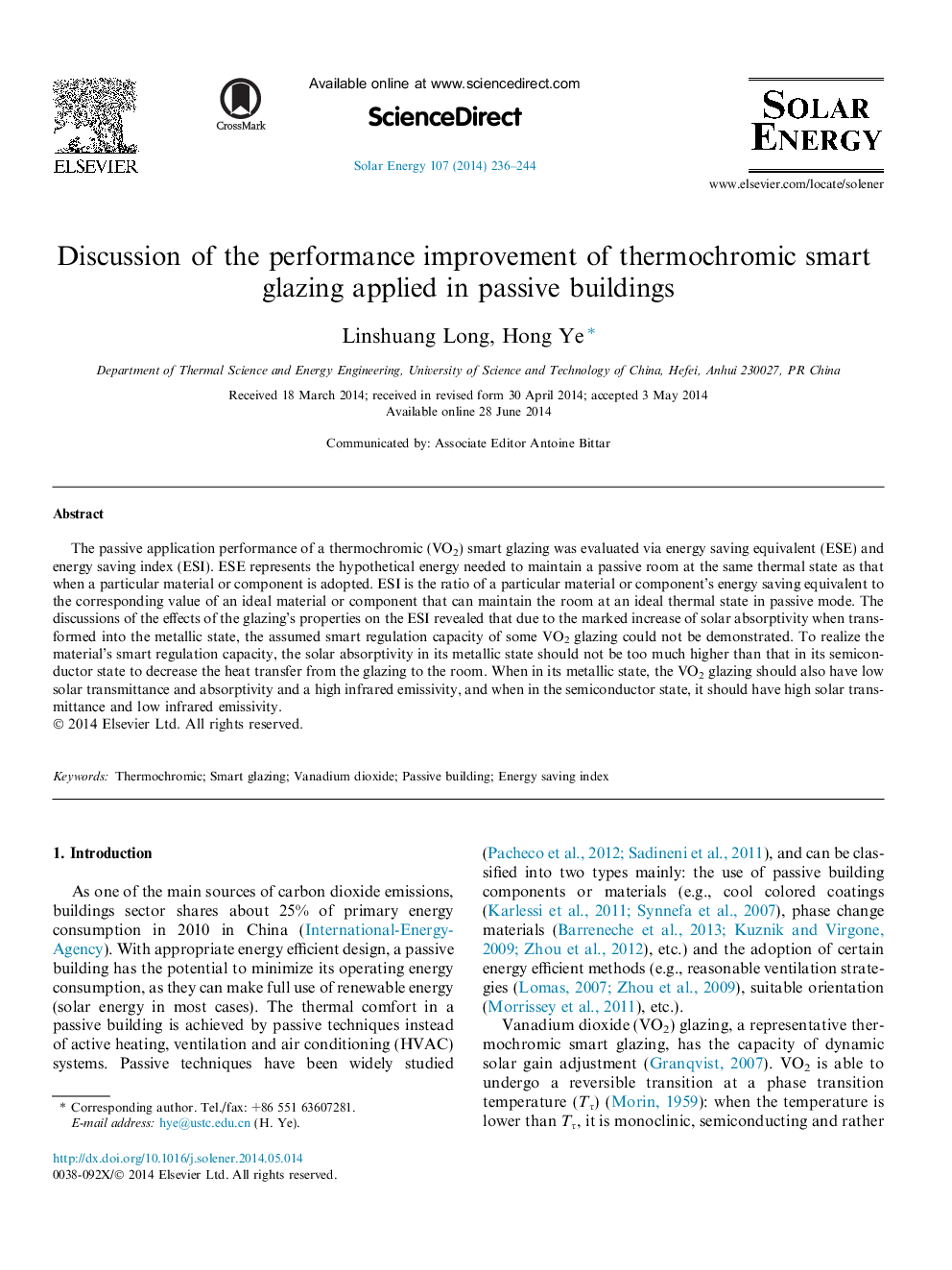| کد مقاله | کد نشریه | سال انتشار | مقاله انگلیسی | نسخه تمام متن |
|---|---|---|---|---|
| 1549936 | 1513111 | 2014 | 9 صفحه PDF | دانلود رایگان |
• Passive application of VO2 glazing was simulated via BuildingEnergy software.
• The application performance was evaluated with an energy saving index (ESI).
• ESI can evaluate the performance of a component/material on a common basis.
• The effects of three VO2 glazing samples’ properties on ESI were discussed.
• Three typical variation trends of ESI with phase transition temperature were found.
The passive application performance of a thermochromic (VO2) smart glazing was evaluated via energy saving equivalent (ESE) and energy saving index (ESI). ESE represents the hypothetical energy needed to maintain a passive room at the same thermal state as that when a particular material or component is adopted. ESI is the ratio of a particular material or component’s energy saving equivalent to the corresponding value of an ideal material or component that can maintain the room at an ideal thermal state in passive mode. The discussions of the effects of the glazing’s properties on the ESI revealed that due to the marked increase of solar absorptivity when transformed into the metallic state, the assumed smart regulation capacity of some VO2 glazing could not be demonstrated. To realize the material’s smart regulation capacity, the solar absorptivity in its metallic state should not be too much higher than that in its semiconductor state to decrease the heat transfer from the glazing to the room. When in its metallic state, the VO2 glazing should also have low solar transmittance and absorptivity and a high infrared emissivity, and when in the semiconductor state, it should have high solar transmittance and low infrared emissivity.
Journal: Solar Energy - Volume 107, September 2014, Pages 236–244
